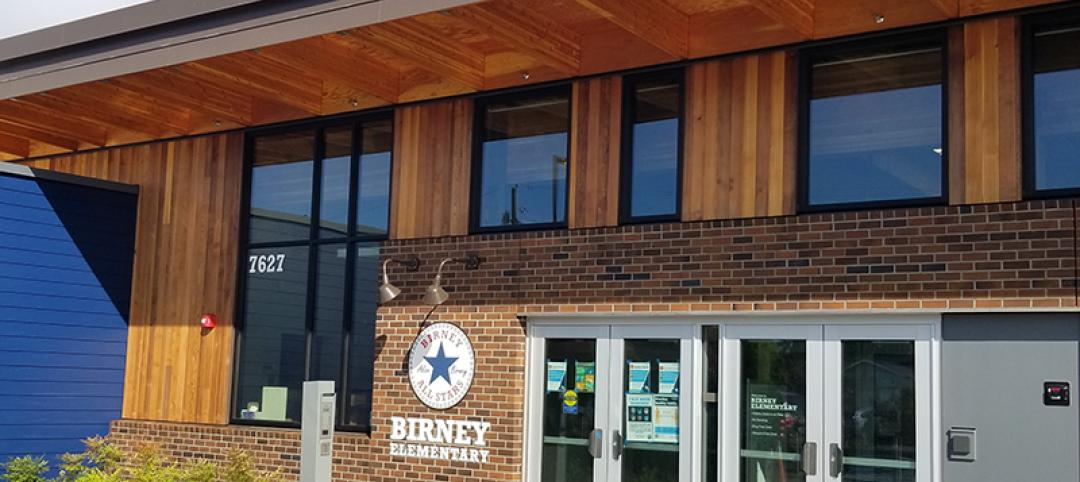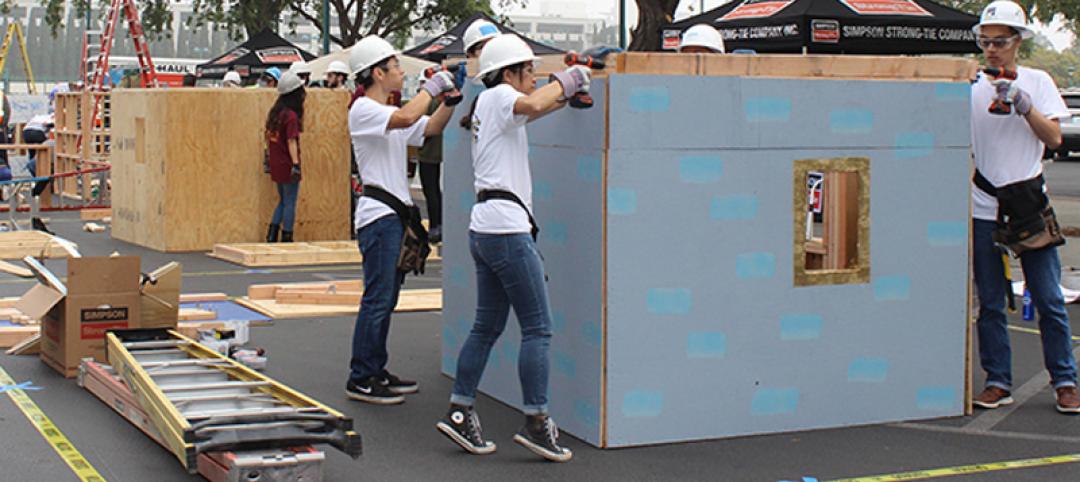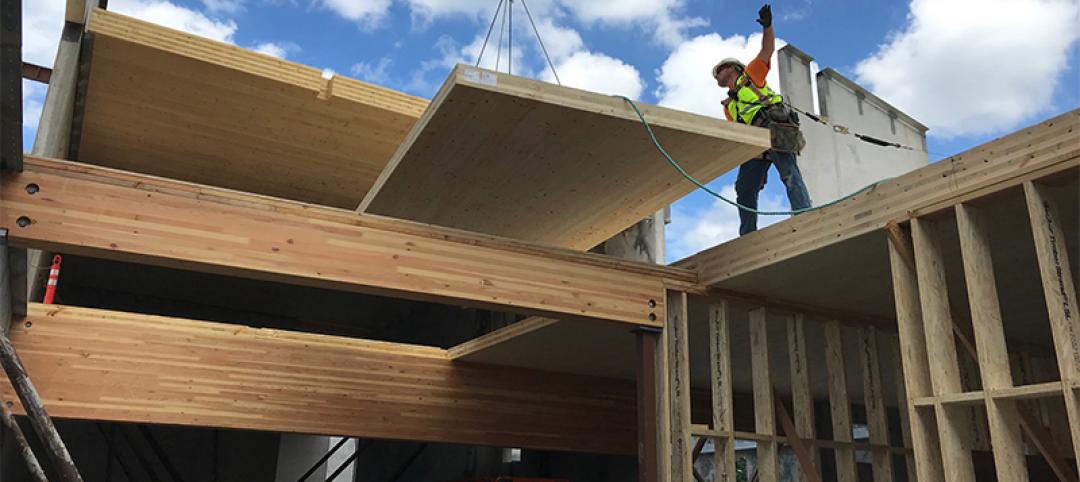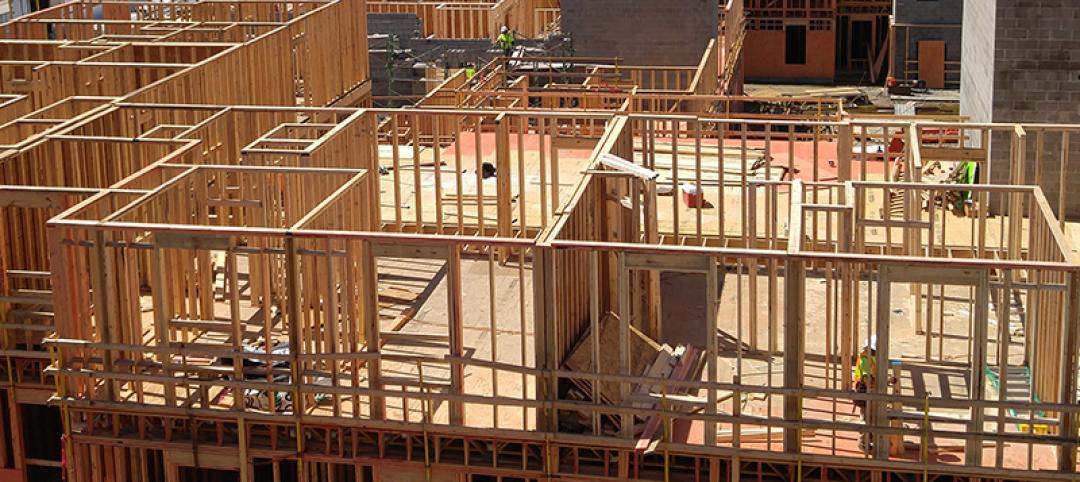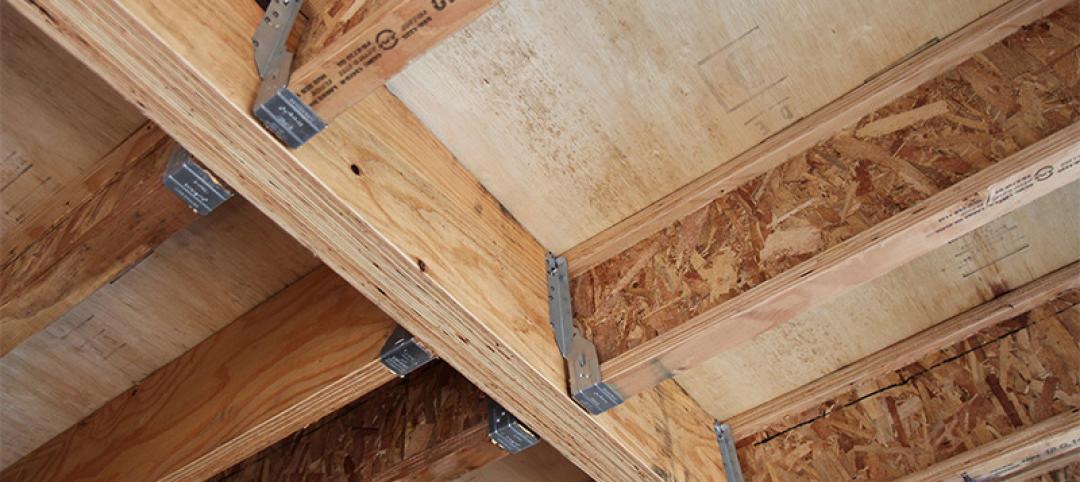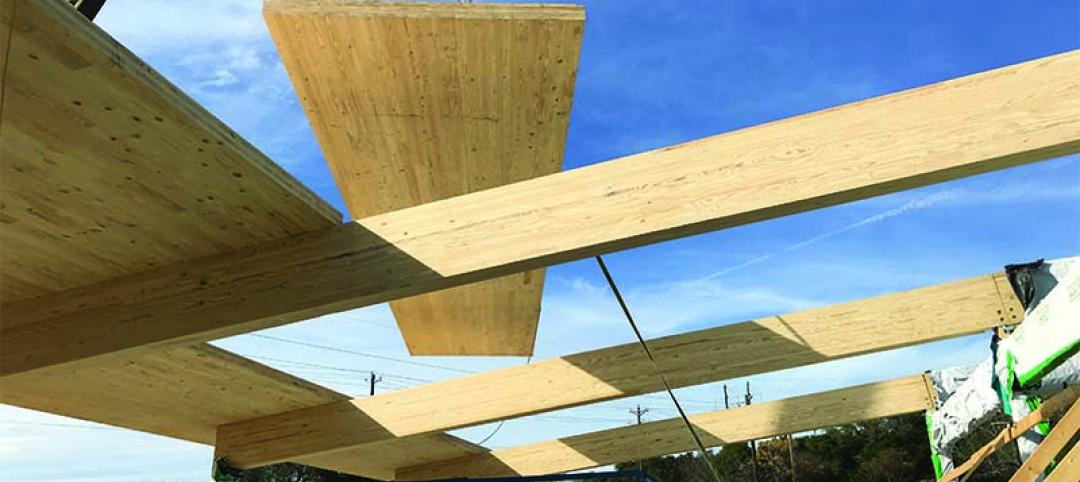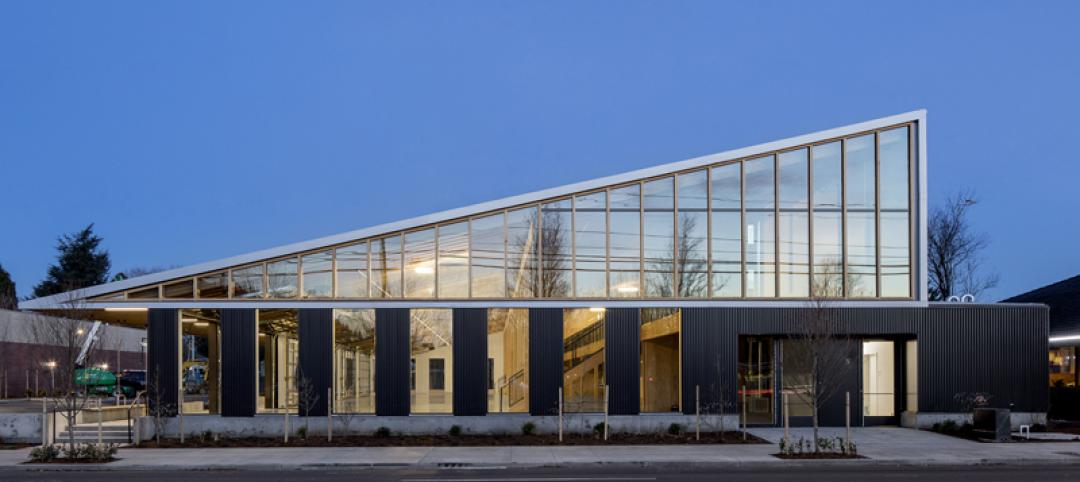A quick explanation of some commonly used fire safety terms and their implications for building construction.
Fireproof? Probably Not.
Because most inhabited buildings have flammable contents and furnishings, there’s no such thing as a truly “fireproof” building. If these contents catch fire, they can quickly generate enough smoke and heat to cause extensive damage.
While “fireproof” is probably not attainable, fire resistant construction is well within reach. Extensive testing of building components and systems has resulted in UL-certified fire-rated assemblies that retain the structural ability to contain a fire long enough for inhabitants to escape.
Fire Resistance Rated (Fire Rated) Assemblies
A fire resistance rating, often shortened to “fire rating,” measures the length of time that a structure can continue to perform its function when exposed to fire. The rating is determined through testing methods prescribed in the building code and is expressed as an “X”-hour fire resistance rated assembly.
For example, a UL listed one-hour fire rated floor assembly, properly built to specification, will support its design load without collapsing or transmitting flame and high temperatures for at least one hour after a fire commences.
Some building products, such as glulam, may also carry a fire rating. But do not confuse fire rating with fire retardant treatment (FRT); the two are in no way equivalent.
Fire Retardant Treated (FRT) Wood
A variety of wood products are available with fire retardant treatments (FRT), a pressure impregnation process that forces a flame-inhibiting substance into the wood fiber. This treatment inhibits flame spread across the surface of the wood, which may qualify for a reduced fire hazard classification—and yet, this does not necessarily impact fire rating.
False Equivalency: FRT ≠ Fire Rating
Fire retardant treatment is mostly helpful for containing smaller, cooler fires, as it retards surface flame spread. But, at a high enough temperature, FRT doesn’t make much of a difference. Flame spread inhibition becomes irrelevant if the fire is very hot or very large, and FRT treatment does little to contain damages under these conditions.
Fire-Rated Glulam
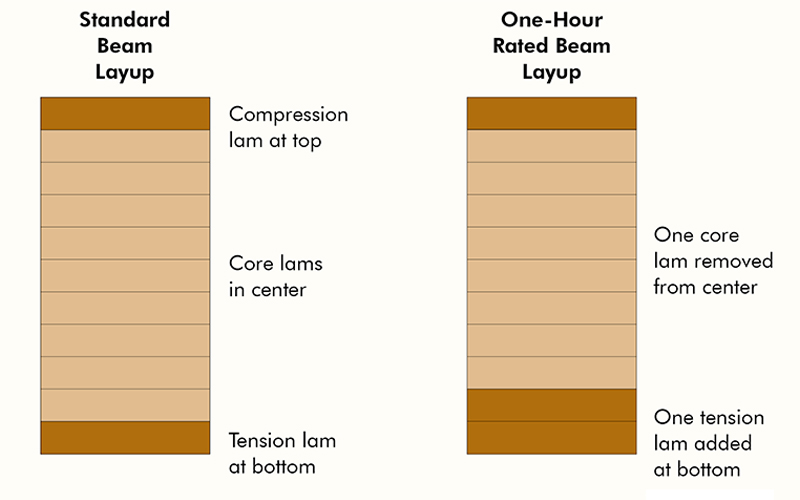
A structural member’s fire resistance is measured by the time it can support its design load during a fire. An exposed beam or column sized for a minimum one-hour fire resistance will support a design load for at least one hour during standard fire test conditions, which simulate an actual fire. To qualify for a one-hour fire rating, a glulam will be manufactured differently, with the core lamination adjacent to the tension lamination replaced by a second tension lamination. As with all other structural framing, specifications of one-hour fire resistance rated glulam should be checked by a professional designer to assure compliance with local codes.
FRT Glulam
While APA doesn’t currently recommend FRT glulams, we understand there are some treaters producing this material. As treatment may cause checking or other impacts on the strength and stiffness of the glulam, designers should request a code report for approval. More information on FRT glulam can be found in APA’s newly issued publication, “Fire-Retardant-Treated Structural Glued Laminated Timber.”
Get this resource and others and learn more about FRT wood products and fire rated assemblies at https://www.apawood.org/fire-phraseology-faqs.
More from Author
APA – The Engineered Wood Association | Nov 12, 2020
Engineered Wood Gets an Easy A
A Washington school district creatively leveraged the aesthetic and acoustic benefits of engineered wood products in their newly constructed school.
APA – The Engineered Wood Association | Oct 26, 2020
2019 Timber-Strong Design Build Competition
Six student teams competed at the National Council of Structural Engineers Association (NCSEA) Summit to design and build the most efficient and creative wood structure.
APA – The Engineered Wood Association | Oct 1, 2020
Exposing the beauty of engineered wood
A glimpse into the creative application of engineered wood products on one of the largest mass timber projects in the Pacific Northwest.
APA – The Engineered Wood Association | Aug 20, 2020
Back to basics: Framing big buildings right
A look into the most common wood construction framing errors, and how to avoid them, in today’s nonresidential construction industry.
APA – The Engineered Wood Association | Jul 14, 2020
Measuring the environmental performance of engineered wood products
“Green” is just a buzzword unless environmental impacts can be demonstrated scientifically.
APA – The Engineered Wood Association | May 11, 2020
The basics of wood frame connection design
Good connection design makes use of wood’s natural characteristics and harnesses its strengths.
APA – The Engineered Wood Association | Apr 15, 2020
Engineered wood in retrofits and remodels
A cost-effective replacement for hard-to-source timbers in historical projects.
APA – The Engineered Wood Association | Mar 3, 2020
Mass timber has banks seeing green
First United Bank Invests in First Mass Timber Buildings in Texas, Oklahoma
APA – The Engineered Wood Association | Feb 14, 2020
Beauty and the Budget
Engineered Wood’s Appeal is More Than Skin Deep


